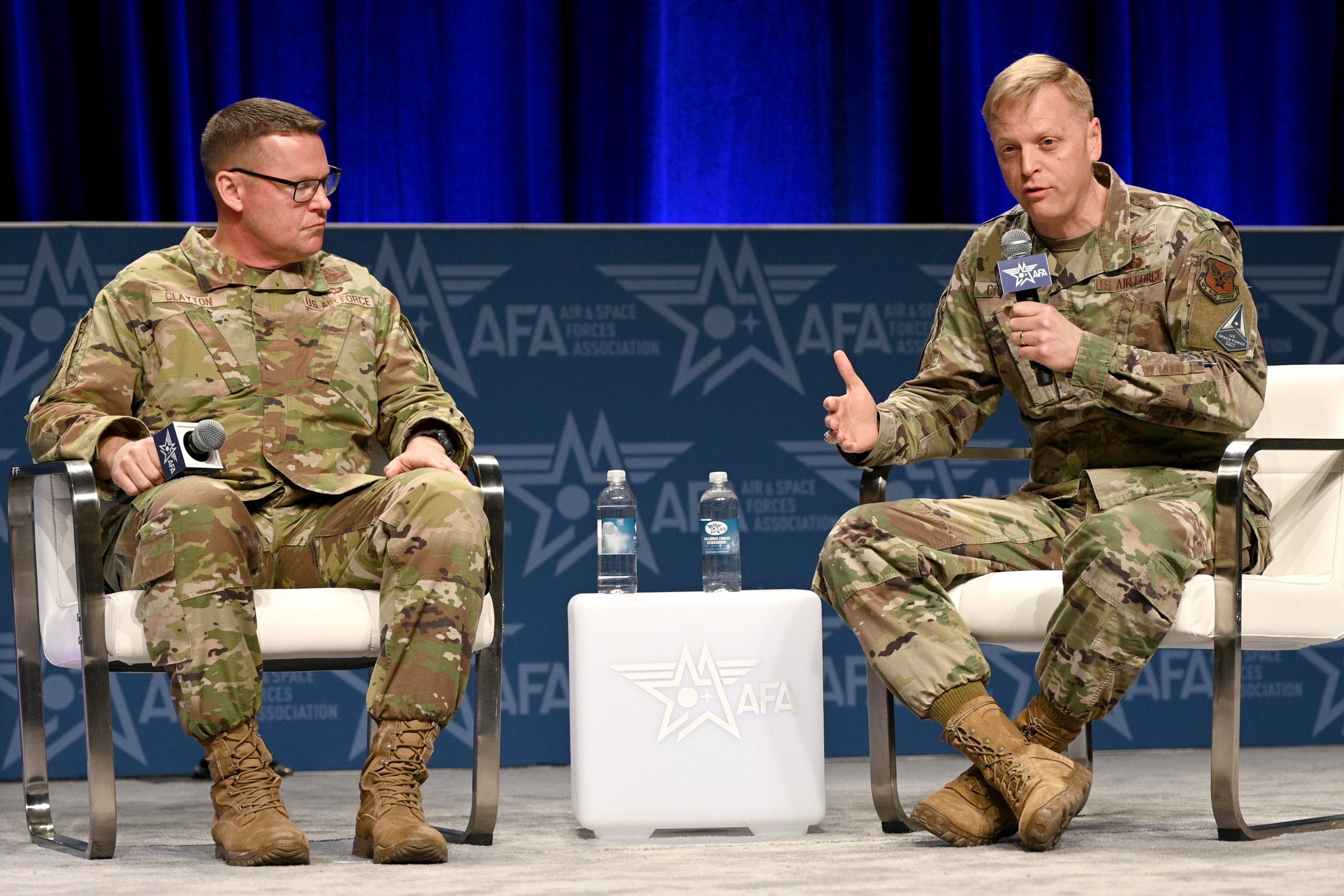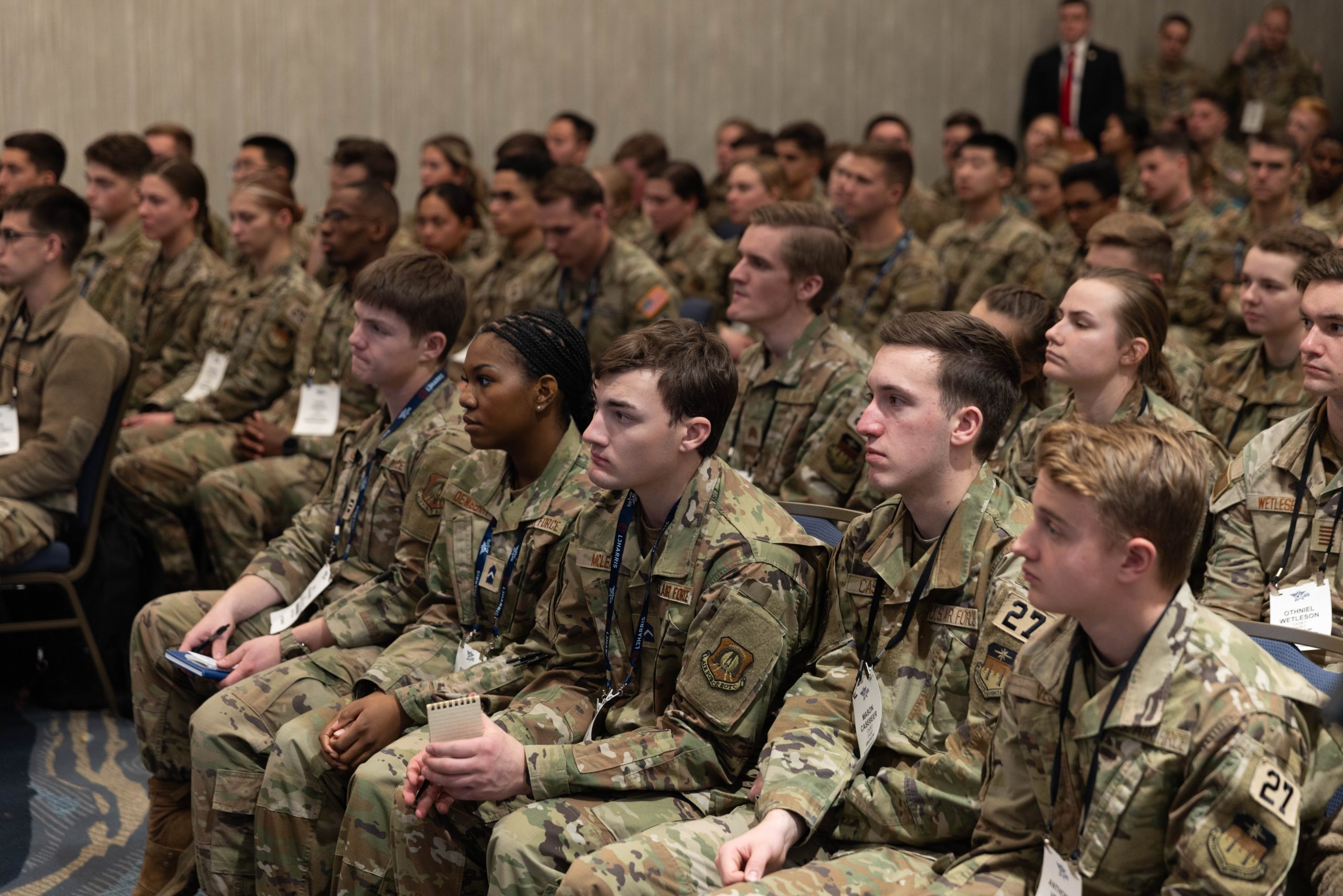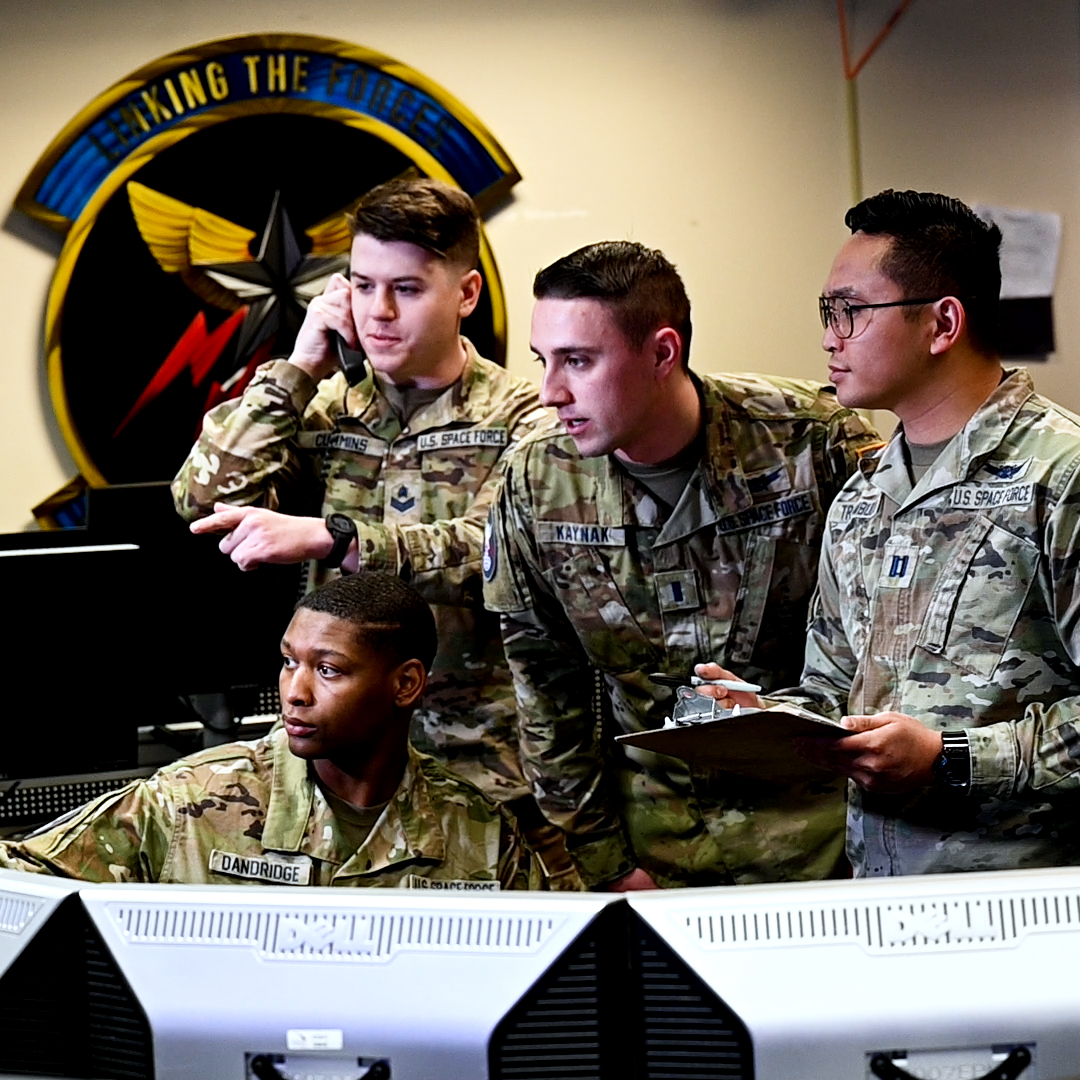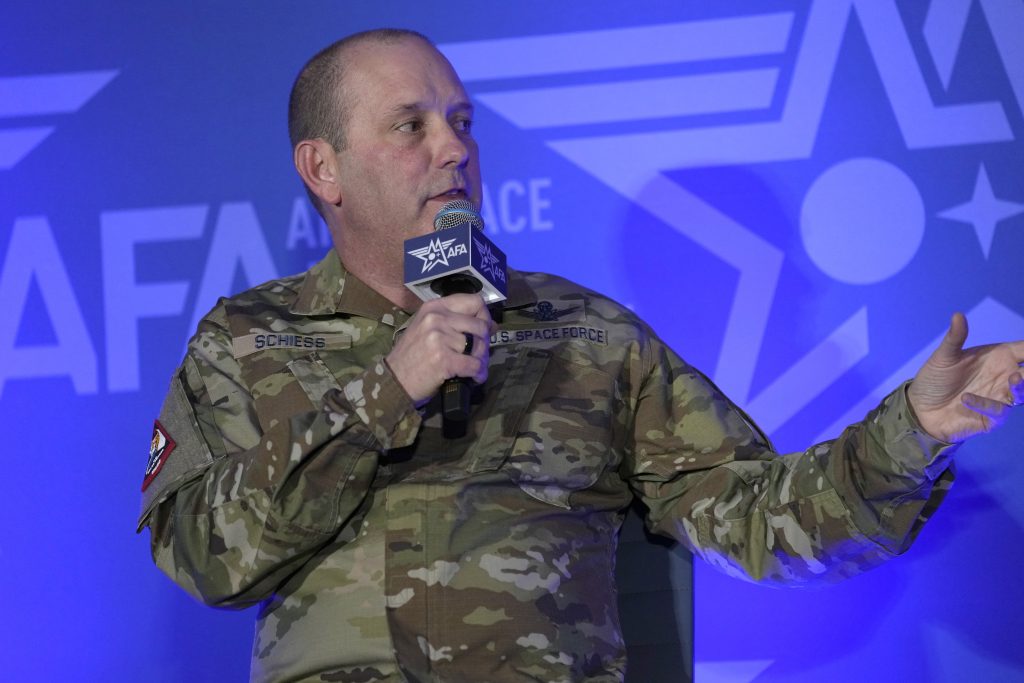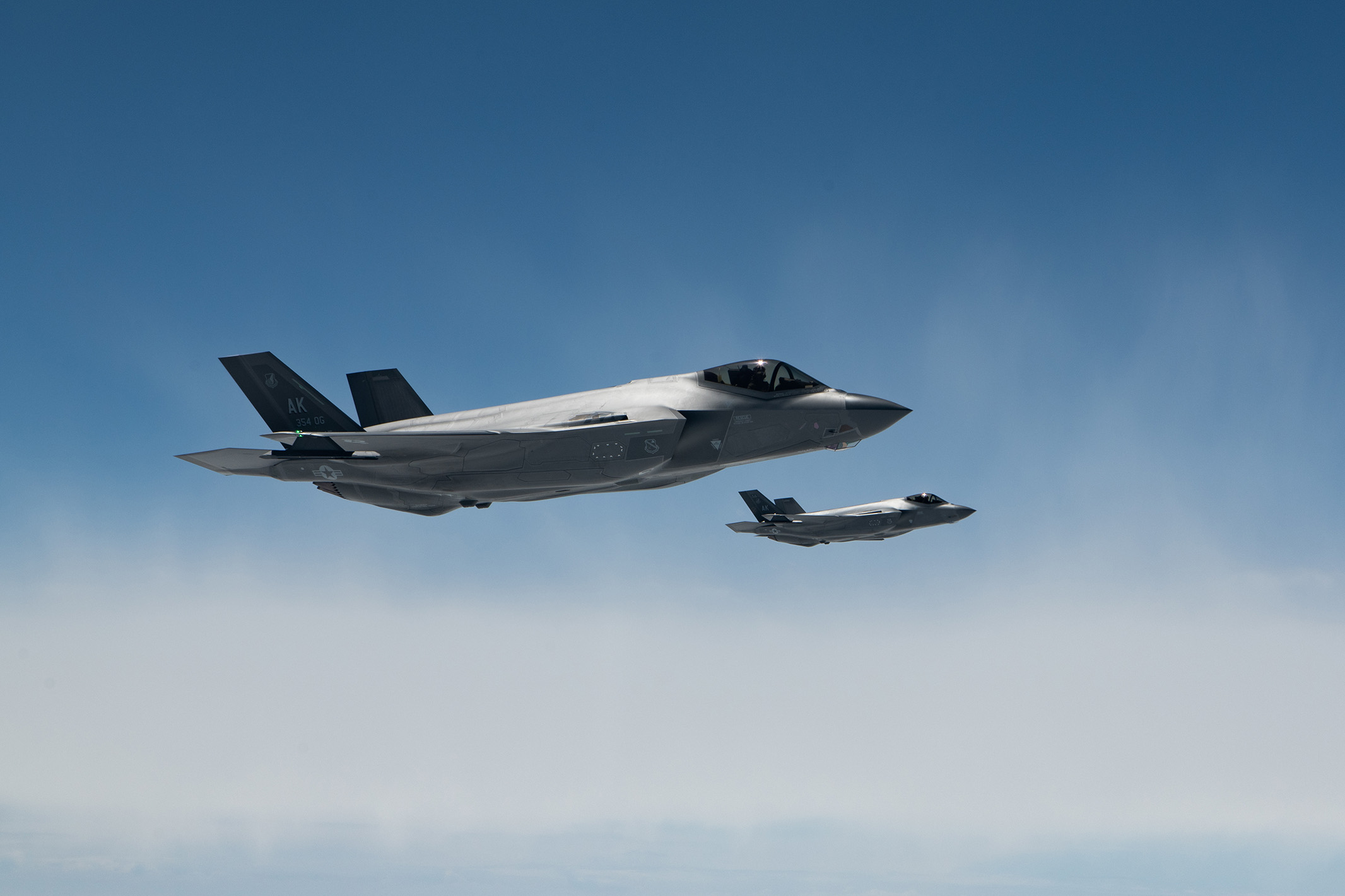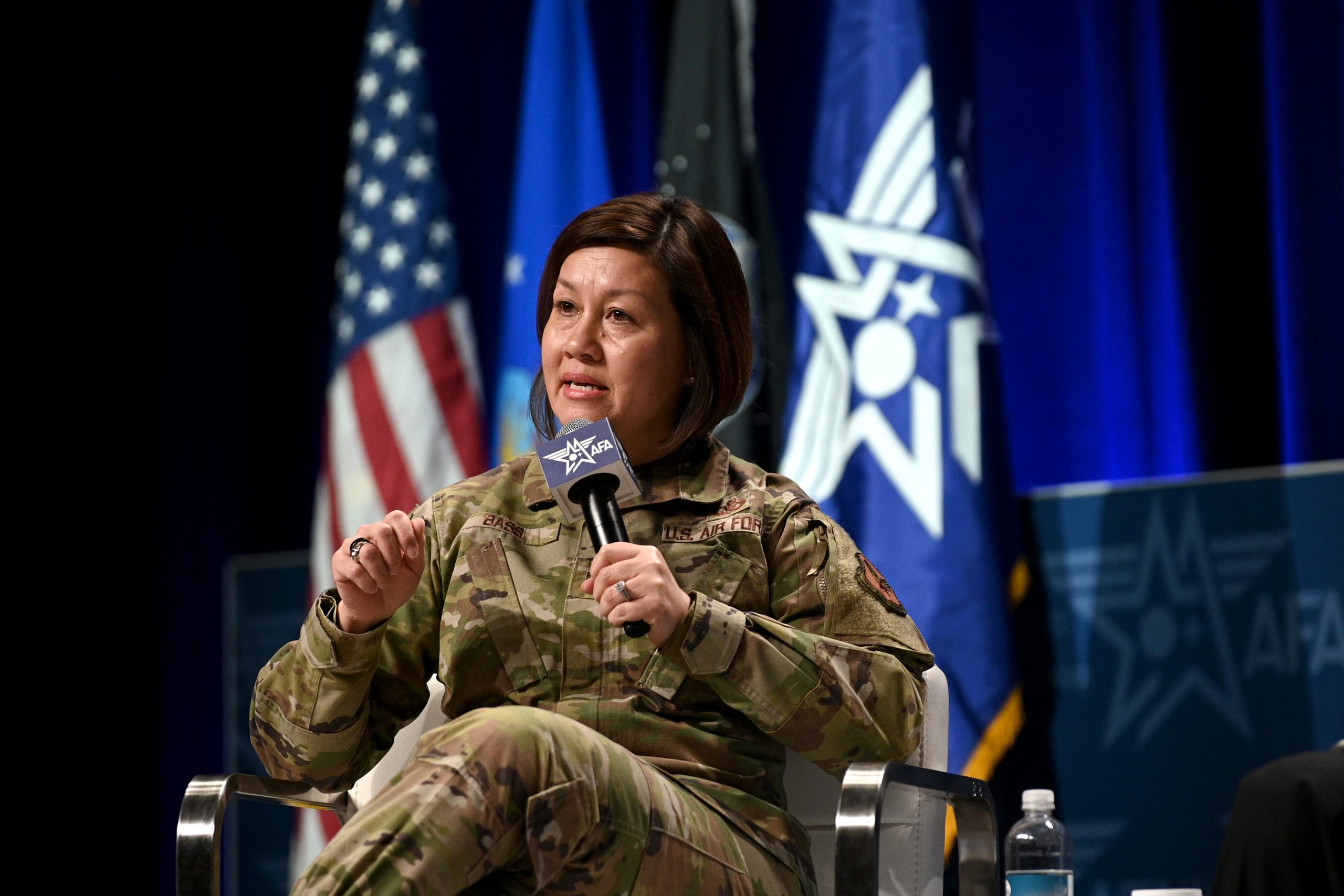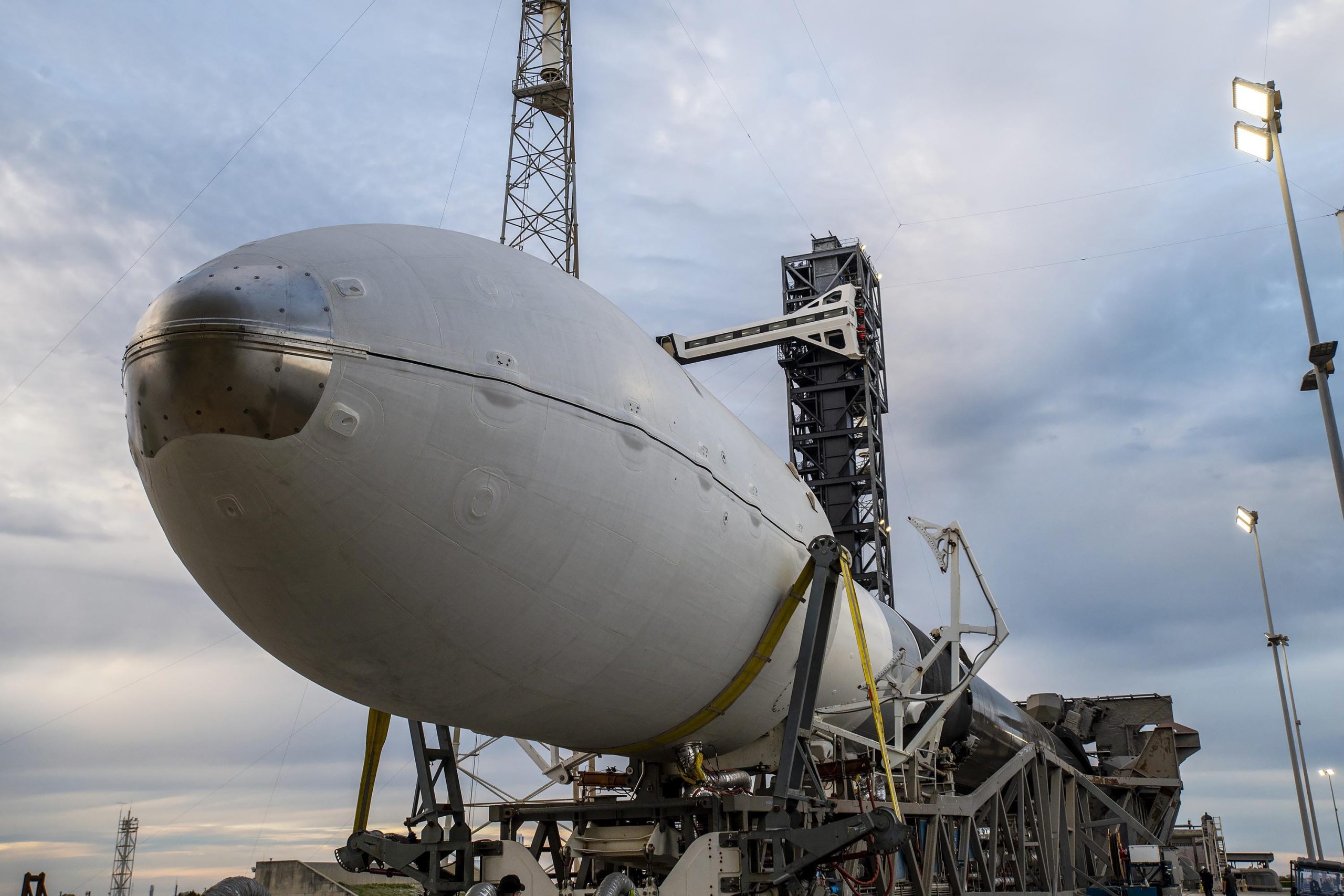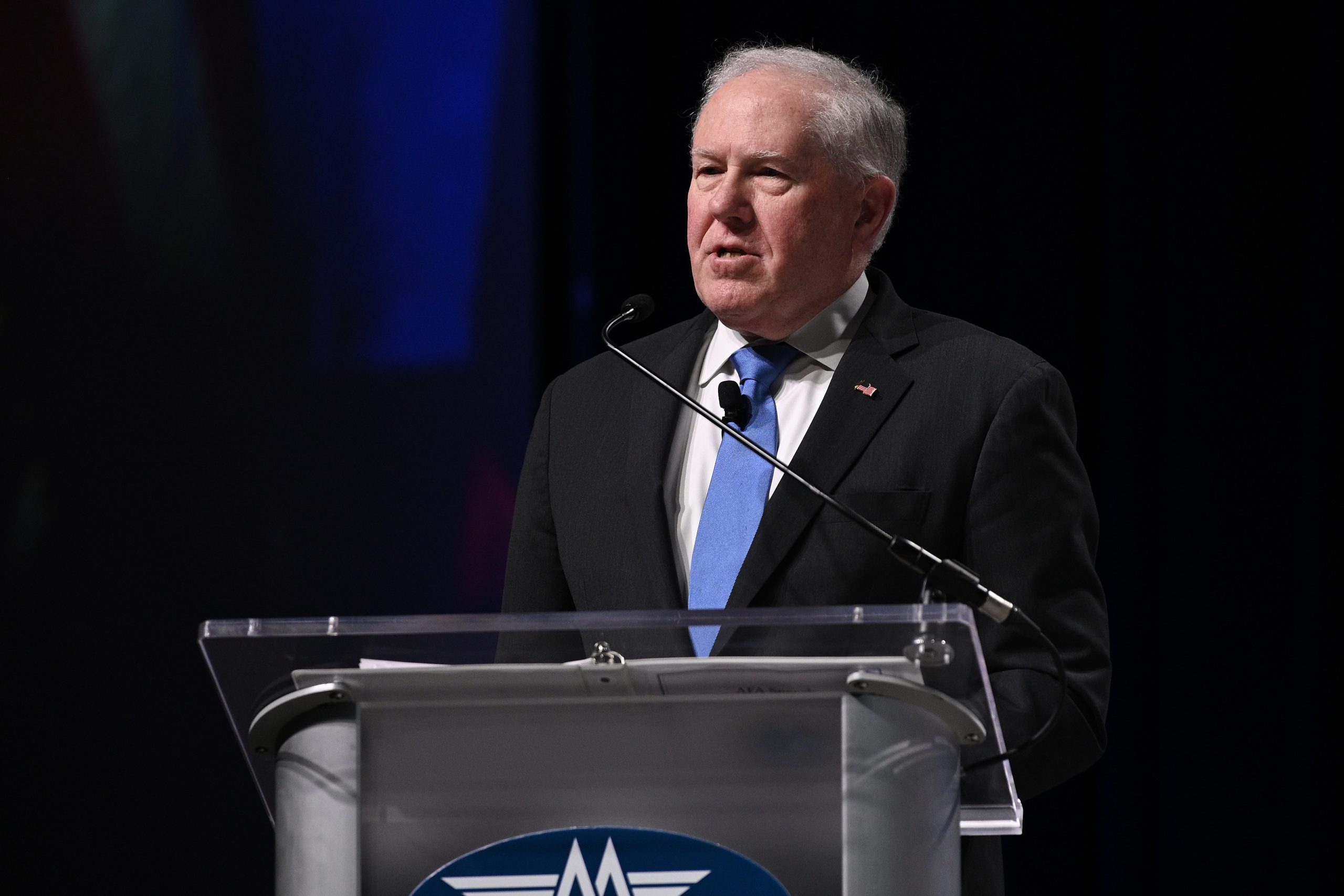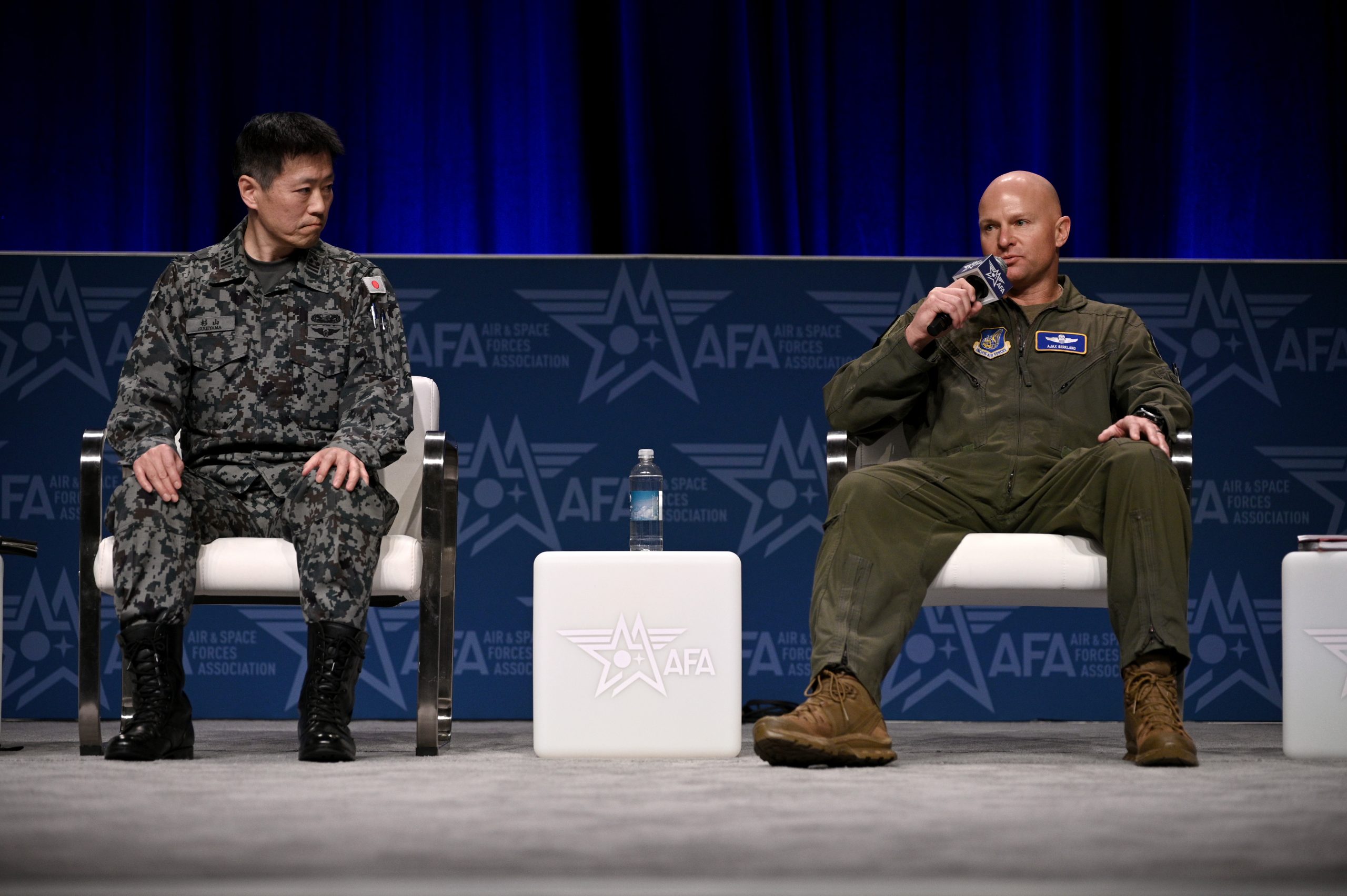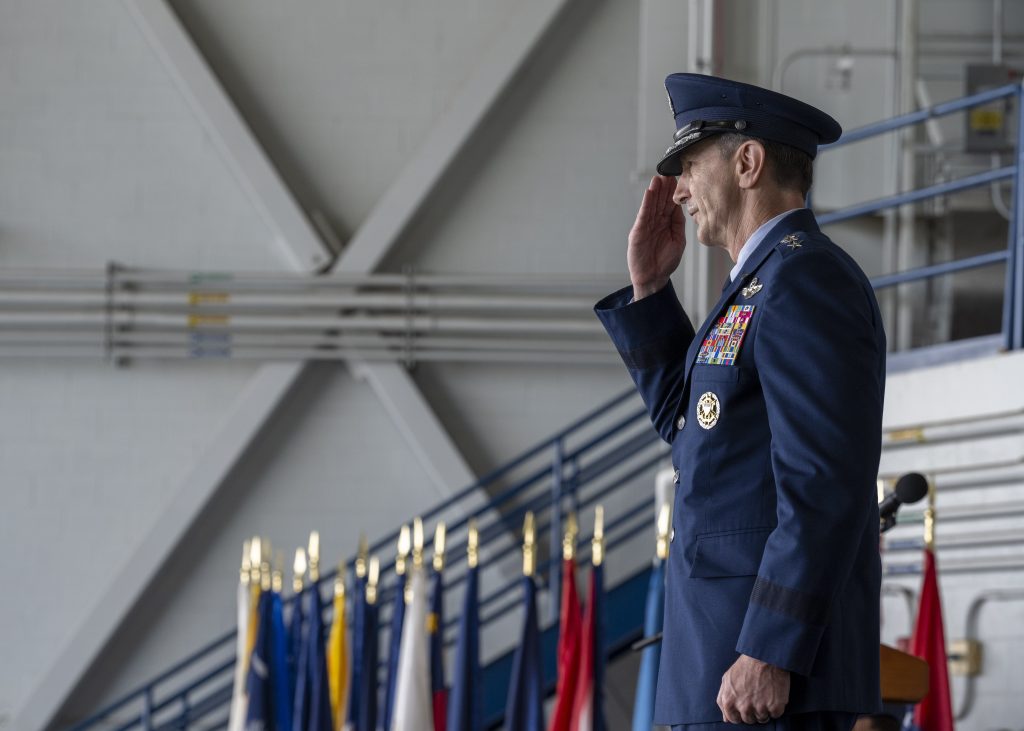AURORA, Colo.—The Air Force has acquired, fielded, and started experimenting with an advanced new command-and-control node, seeking feedback from Airmen before acquiring hundreds more, the service’s leading C2 officials said at the AFA Warfare Symposium.
The Tactical Operations Center-Light (TOC-L) is a computer system that does “wicked good fusion data integration … across 800 different feeds that are specific to air battle managers and the air picture,” said Brig. Gen. Luke C.G. Cropsey, the Air Force’s command, control, communications, and battle management czar.
The Air Force has 16 TOC-L prototypes in field testing today.
“I’ll call it the basic building block for where we’re going for infrastructure for C2,” Cropsey said. The systems “are being integrated in a number of joint COCOM-level exercises as well as service-sponsored exercises, so that we’re giving the operator an opportunity to go muck around with it and figure out what works, what doesn’t work, what we need to modify… And then we’re going to move into a phase two of that program very quickly, where we’ll actually start scaling that capability out.”
How many TOC-L kits the Air Force will need is not yet clear, Cropsey said, but the numbers will be in the hundreds, not thousands.
Brig. Gen. Daniel C. Clayton, director of the Advanced Battle Management System Cross-Functional Team, said the Air Force is sending a TOC-L system to the Army’s Project Convergence “Capstone 4” exercise, which runs Feb. 23-March 20 . Project Convergence exercises focus on the Pentagon’s wider Joint All-Domain Command and Control efforts to accelerate sensors-to-shooter decision making.
That kit will be running another of Cropsey and Clayton’s major projects: Cloud-Based Command and Control (CBC2), which fuses data from 750 radar feeds into a single interface and uses artificial intelligence to help battle managers choose and execute a path of action.
Cropsey touted the rollout of CBC2 to U.S. Northern Command and North American Aerospace Defense Command last fall at AFA’s Air, Space & Cyber Conference. The this week, five months later, he revealed that the system is now operational for NORAD’s eastern air defense sector and Canadian air defense sector, “with more on the way,” he added.
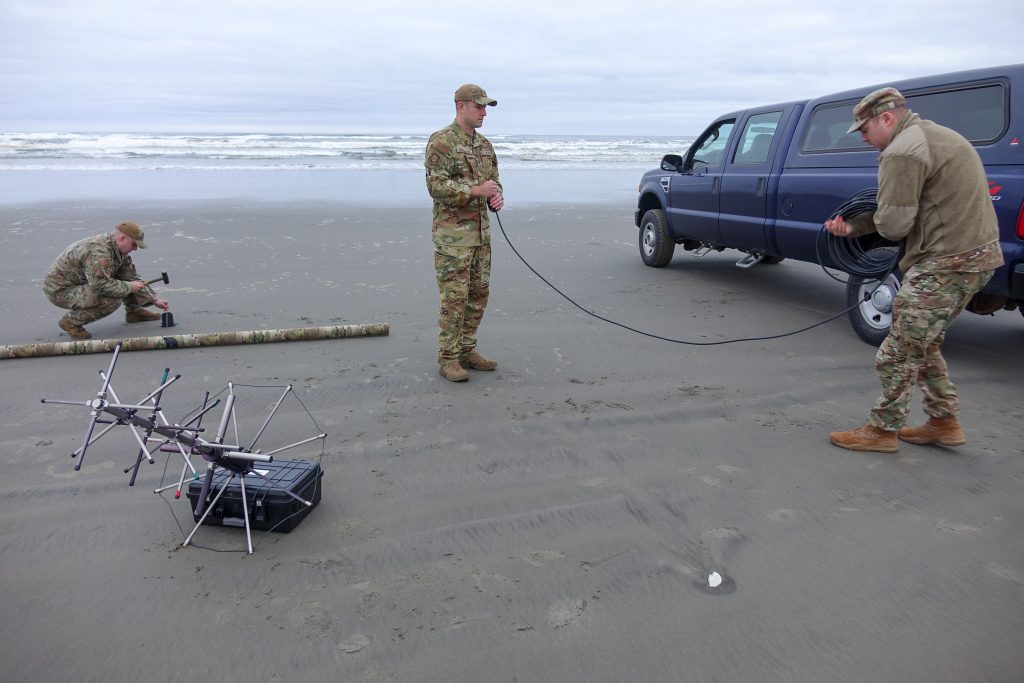
CBC2 and TOC-L are relatively low-profile programs when compared to billion-dollar aircraft buys, but Cropsey and Clayton said that’s by design.
“You’re not going to see what I’ll call big, splashy, major awards for hundreds and hundreds of millions of dollars, as much as you’re going to see lots of very targeted, specific kinds of works that are coming out to do a thing over here, a thing over there, do some integration, present another capability, and then work it back into the operational scene as quickly as we can,” Cropsey said.
Cropsey cited the Distributed Battle Management Node, “an element that goes out and grabs these individual pieces and integrates them into a single capability offering,” as an example. He said the Air Force is soliciting industry for Phase II of that program, even as Phase I prototypes are about to start arriving at air control squadrons, Cropsey said.
Air Force Secretary Frank Kendall made fielding operationally relevant C2 capabilities one of his seven Operational Imperatives for the department two years ago, and Cropsey and Clayton have emphasized for months that they are not simply conceptualizing future capabilities, but rolling out real solutions.
“Seven years ago, it was a lot of lightning bolts on charts,” Clayton said. “Those days are behind us. We have actual stuff in the field that is allowing the warfighters to test and experiment with it and have that decision advantage today.”
